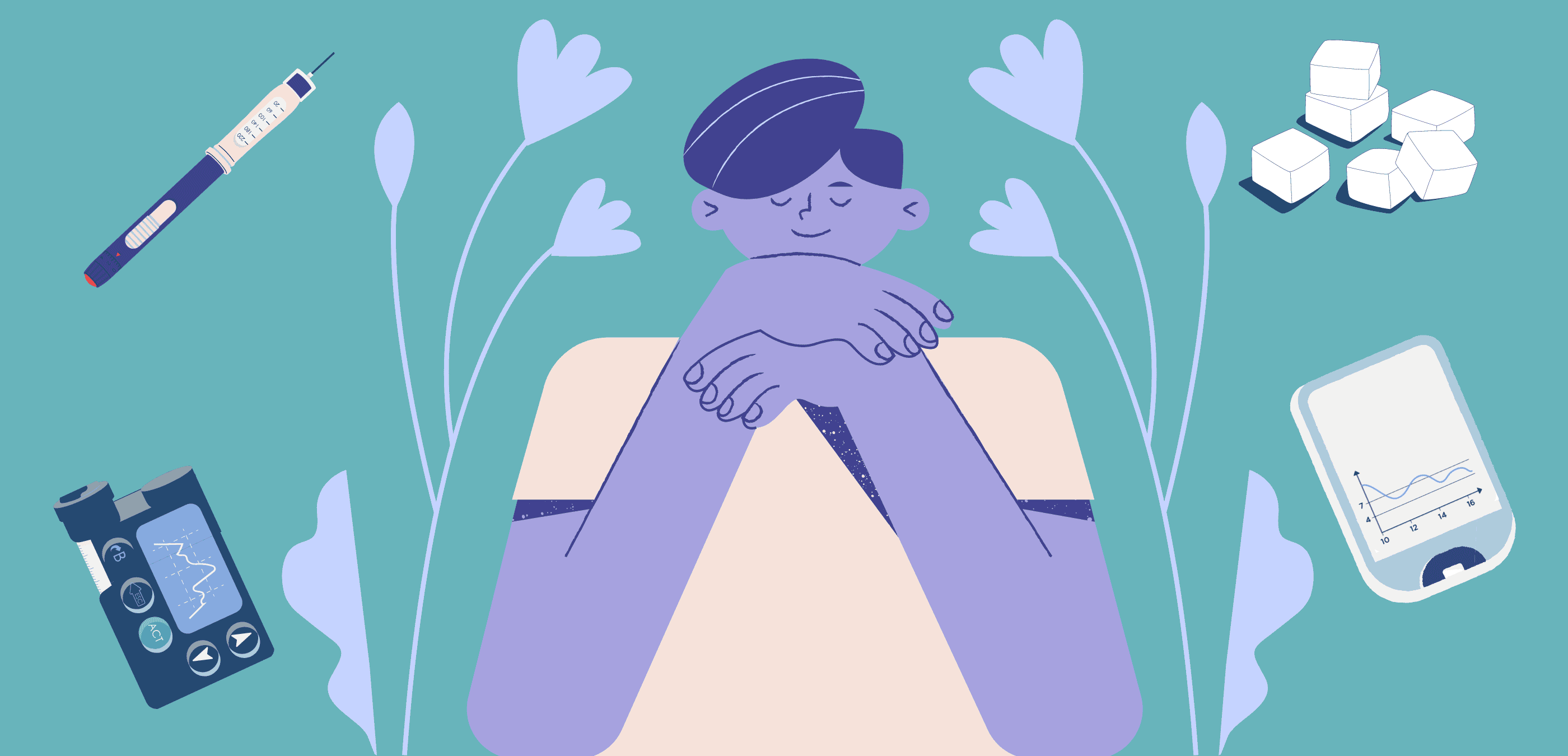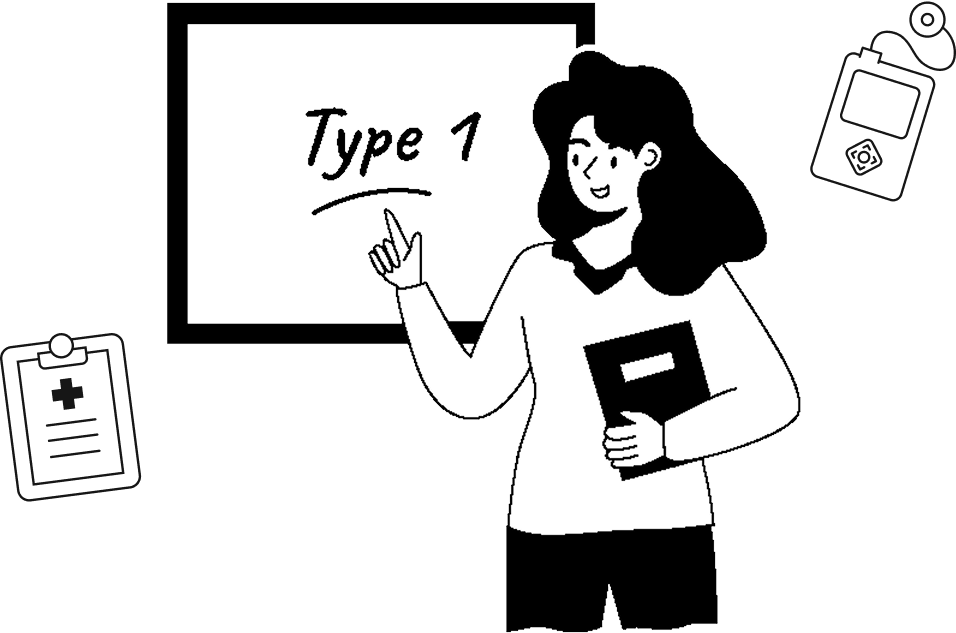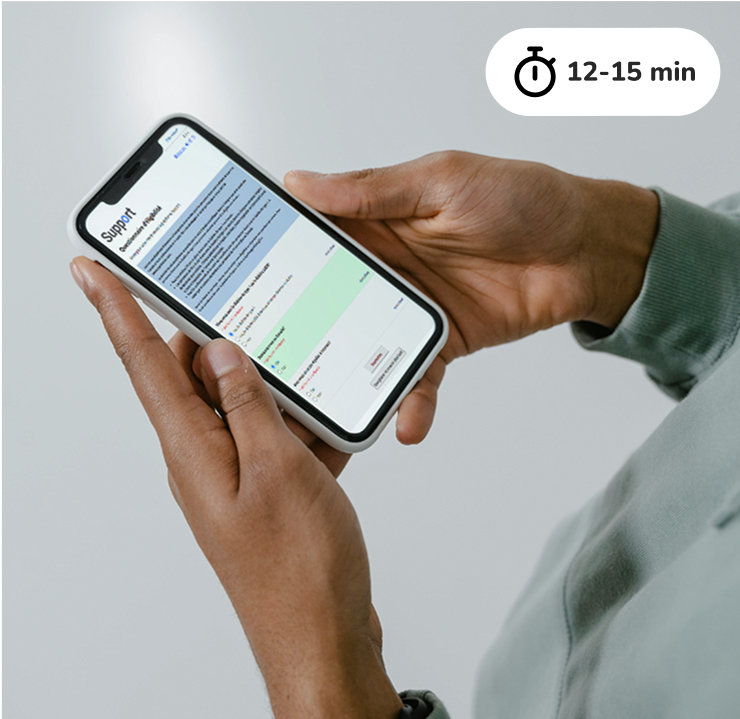(Written in March 2022; updated on May 1, 2024)
While living with type 1 diabetes (T1D) is challenging, accepting it might be even more so. It’s quite a load to take on: understanding the illness, reorganizing your daily life around it and being mindful of all that needs to be done on a daily basis to optimize blood sugar management.
Over time, a person can learn to cope by managing their diabetes and treatment in a way that optimizes their overall health. But is it possible to accept living with this chronic physical illness?
The coping process
Coping with T1D and managing the stress and requirements of its treatment while maintaining self-esteem is a five-step process similar to the stages of grief. The order and length of each step vary from one person to another depending on their life experience or environment (e.g., more or less quick, more or less conscious, more or less intense). Just like each person experiences grief differently, some steps might overlap or simply not surface.
Life being what it is, some days are more difficult and can make you go through certain steps all over again even though you felt you were done with the process.
- Shock and denial
This first step follows the diagnosis and is characterized by denial (e.g., “my child will get better”, “this can’t be diabetes; nobody in the family has it”) or minimizing the existence of diabetes, its chronic nature and the need for treatment. While going through this step, you might be scared of this new reality and the potential threat to your physical integrity (e.g., “it’s nothing serious”, “I don’t feel ill”).
- Outrage and rebellion
Diabetes and its treatment are seen as being unfair. You understand the threat, but also see the negative aspects of diabetes. Because you feel like you are being treated unfairly, you might resent others, blame the world (e.g., “why me?”, “this is not fair”) and feel anger, defiance or frustration.
- Negotiation and bargaining
During this phase, you seek to have more “control” over T1D to reduce the feeling of helplessness. You might follow the treatment only partially, leaving out the aspects you dislike the most (e.g., “I take insulin, but I don’t count carbs. I don’t need to count carbs; I’ll live with it!”). Of course, this feeling of “control” is only an illusion; all aspects of treatment—even the most irritating ones—are essential to achieve good blood sugar management.
- Reflection, resignation or depressive feelings
This is the last step before acceptance. You realize that T1D is a chronic condition and that some losses may be permanent (e.g., ability to do an activity spontaneously). With this new awareness, you may feel sad and wonder whether you can live with this condition for the rest of your life.
- Acceptance
You now have a more realistic understanding of your condition and decide to take concrete steps to manage T1D and its treatment in your daily life. You realize that achieving psychological well-being and a satisfying social life is within your reach if you get involved in your treatment and learn more about T1D. You don’t necessarily agree with having to live with this condition, but you accept to follow recommendations for managing T1D by taking conscious measures.
Going through these steps might be easier with the support of resources such as your healthcare team, your family and friends or fellow T1D people. Nobody can force you to accept T1D, but you can get support and have others sympathize with your emotional journey towards acceptance.
Remember that each person with T1D feels, sees and experiences the illness in their own unique way.
Resilience is your friend
The ability to overcome challenges—including those that are specific to T1D—, to bounce back and to eventually rebuild yourself optimistically (e.g., after the diagnosis) is called resilience. If resilience is not your strong suit, there are strategies that can help you build and boost it.
- Identify and use your inner resources. Each person has their own tools to face challenges and achieve their goals—and that is also true for people with T1D who must follow their treatment. Identifying and using your strengths (e.g., what you know, what you like to do) will help you live better with T1D (e.g., “I can downplay my situation using my sense of humour”, “I can find solutions to T1D-related problems using my creativity”).
- Identify and use social and environmental resources. People around you (e.g., family, friends, colleagues, roommates, healthcare team) who are already involved or who want to help you live better with T1D are precious resources. They can support you, help you when you need it, empathize with you and help make you feel less alone.
Other healthcare professionals (e.g., psychologists, social workers) are also good resources to help you build resilience and achieve your T1D-related goals.
Getting in touch with other people who live with T1D (peer support) can also support emotional, social and behavioural coping with diabetes. Studies have found that people who use peer support manage their blood sugar better than people who don’t.
- Identify and use technological resources. Technological tools (e.g., continuous glucose monitoring [CGM] systems, insulin pumps) are known to have a positive impact on quality of life and can help you feel more in control and build resilience.
No matter what stage you are towards acceptance, acknowledging your coping efforts and practising self-compassion are key to further adapt to your treatment and live better with T1D over time.
References:
- Louis Geoffroy et Monique Gonthier. (2012). Le diabète chez l’enfant et l’adolescent. Montréal: Édition du CHU Ste Justine.
- Unité de médecine de jour métabolique de l’Hôtel-Dieu du CHUM. (2013). Connaître son diabète pour mieux vivre. Montréal: Les Éditions Rogers limitée, Groupe santé.
- Kamody, Rebecca C. et al. (2018). Psychological Flexibility Among Youth with Type 1 Diabetes: Relating Patterns of Acceptance, Adherence, and Stress to Adaptation. Behavioral medicine (Washington, D.C.) 44(4): 271-279. doi:10.1080/08964289.2017.1297290
- Amsberg, Susanne et al. (2018). Acceptance and commitment therapy (ACT) for adult type 1 diabetes management: study protocol for a randomised controlled trial. BMJ open 8(11 ): e022234. doi:10.1136/bmjopen-2018-022234
- Jaser, S. S., and L. E. White. (2011). Coping and resilience in adolescents with type 1 diabetes. Child: care, health and development 37(3): 335-42. doi:10.1111/j.1365-2214.2010.01184.x

Meeting or chatting with people with T1D
There are many groups and activities, including:
- The VPN Facebook page welcomes people with T1D aged 14–24 years who live in Canada. You can share your knowledge, discuss recent diabetes-related developments or share funny stories with T1D peers. Find out more.
- Specialized summer camps for children with T1D. Find out more.
- JDRF Canada Type One Diabetes Support Group (all ages).
- Facebook groups like Canadian Diabetes Type 1 to meet people with T1D across Canada.

NEED HELP?
For some people, it is more difficult to cope and to build resilience. If you feel like you are losing control, reach out to one of the resources below; they are there to help you.
- kidshelpphone.ca
- 811 HealthLine
- 988: Suicide Crisis Helpline if you or someone you know is thinking about suicide.




